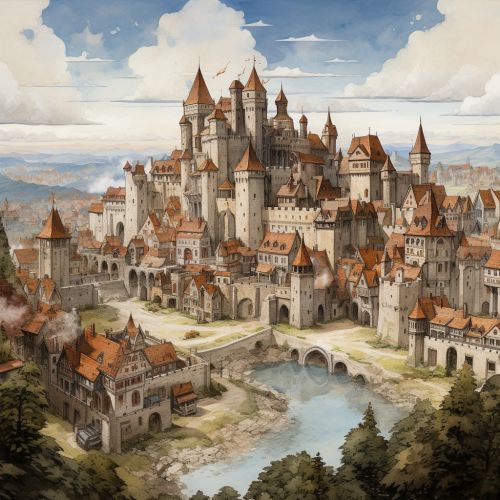Jerusalem in Medieval Cartography
Introduction
Jerusalem, a city of profound historical and religious significance, has been depicted in various ways throughout the centuries, particularly during the medieval period. The city's representations in medieval maps provide a fascinating insight into the geographical knowledge, religious beliefs, and cultural perceptions of the era.


Medieval Cartography
Medieval cartography refers to the study and practice of map-making during the medieval period, roughly from the 5th to the 15th century. During this era, maps were not merely geographical tools but also served religious, political, and symbolic purposes. Jerusalem, being a city of immense importance to Christianity, Islam, and Judaism, was frequently depicted in these maps.
Jerusalem in Medieval Maps
In medieval maps, Jerusalem was often depicted as the center of the world, reflecting its religious significance. This centrality was not merely symbolic but was also represented geographically, with Jerusalem often placed at the center of world maps, such as in the T and O maps.
T and O Maps
T and O maps, also known as O-T or Orbis Terrarum maps, were a type of medieval world map. They depicted the world as a circle (the 'O') divided by a 'T' into three continents: Asia, Europe, and Africa. Jerusalem was typically located at the center of these maps, at the intersection of the 'T', symbolizing its perceived centrality in the world.
Jerusalem Maps
Apart from world maps, there were also maps specifically focused on Jerusalem. These maps, often found in manuscripts and pilgrim guides, provided detailed depictions of the city's layout and important religious sites. They served both practical purposes, helping pilgrims navigate the city, and spiritual ones, reinforcing the city's religious significance.
Theological Significance
The central placement of Jerusalem in medieval maps was not merely a geographical statement but also a theological one. It reflected the belief in Jerusalem as the spiritual center of the world, a concept deeply rooted in Christian, Islamic, and Jewish traditions.
Christian Perspective
In Christianity, Jerusalem was seen as the city of Christ's crucifixion and resurrection, making it a focal point of Christian faith and pilgrimage. Its central placement in maps was a visual representation of its spiritual centrality.
Islamic Perspective
In Islam, Jerusalem, or Al-Quds, is revered as the site of the Al-Aqsa Mosque, the third holiest site in Islam, and the place from where Prophet Muhammad is believed to have ascended to heaven. Its depiction in maps underscored its importance in the Islamic world.
Jewish Perspective
For Jews, Jerusalem is the site of the First and Second Temples and the eternal capital of the Jewish people. Its prominent placement in maps reflected its enduring significance in Jewish history and belief.
Conclusion
The depiction of Jerusalem in medieval cartography offers a unique window into the religious, cultural, and geographical perceptions of the Middle Ages. These maps, while not accurate by modern standards, provide invaluable insights into the medieval worldview and the enduring significance of Jerusalem in the world's major religions.
